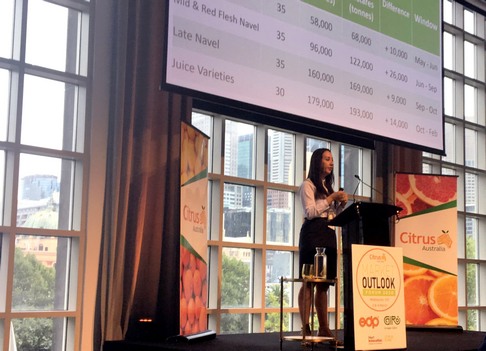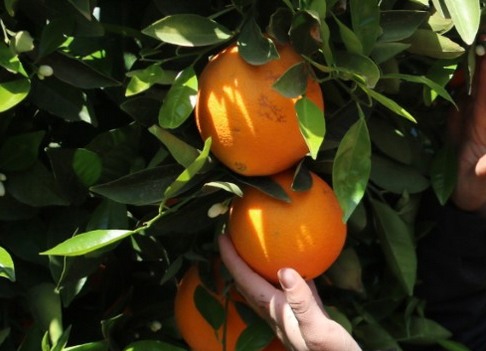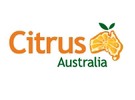The Australian citrus industry is in the middle of a growth phase, with more plantings going in and existing trees set to bear more fruit in coming years, according to the latest data from Citrus Australia.
Collation of plantings data had been happening nationally for many years, but only started to receive some "really good data" from 2014 with the commencement of the Citrus Tree Census. Quality & Market Information Project Officer Mara Milner explained that the data was formed from dedicated resources at Citrus Australia and an online platform for data entry translating to growers providing more detail in their survey.
"From last year's tree census to this year’s, we have received a really good response," Ms Milner said. "It also increased the hectares by a further 5 per cent. We are really close to 27,000 hectares, and from the plantings that are not being captured, we are pushing 30,000-plus hectares. From 2014, we have really increased the plantings that we have captured, by 21 per cent. But note, that's not necessarily new plantings, in some cases, it is the hectares that were already out there that we are capturing for the first time, as well as new plantings."

Photo: Mara Milner presenting Citrus Tree Census data at the Market Outlook Forum in Melbourne.
Nationally, the greatest plantings are coming from the Riverina in New South Wales, which accounts for 30 per cent of plantings or around 8,000 hectares, followed by the Murray Valley with 5,500 hectares. Other production regions include the Riverland in South Australia, South Queensland, Western Australia and the Northern Territory.
In terms of the citrus category, oranges made up 17,000 hectares which can be split between the navel and juicing oranges.
"From 2014 navels have increased by 19 per cent, while the juicing category is decreasing," Ms Milner said. "Mandarin as a category has had a massive increase of 37 per cent in the past six years - that's really been ticking along. As far as lemon and limes, it was interesting, because we not only captured new plantings, but we have been capturing more of the existing hectares in areas such as Far North Queensland.”
From the current data that is captured, Citrus Australia has been able to make predictions on future yields. Ms Milner added that the data is also analysed by a series of different committees within the organisation, throughout the different regions, to get crop estimates.
"I've done some forecasting, assuming if we were going to plant no more and once everything goes from non-bearing to full-bearing," she said. "What we predict for this year in terms of tonnes per hectare, how will that translate in 4 years."
The significant increases are predicted to be in the mandarin category, the Afourer Mandarin will double in volume to approximately 100,000 tonnes; it is a similar story with Murcotts. This trend is worldwide; every major citrus-growing country has planted up significantly more mandarins which are considered a healthy snack choice by many.”

File photo: courtesy Citrus Australia
But Ms Milner says there was some interesting data surrounding lemons and limes.
"They are all basically in the bearing stage," she said. "There are some small numbers of plantings coming on. There were 65,000 tonnes of lemons, and 24,000 of limes. But they are hard to calculate a prediction because regions such as North Queensland and the Burnett, where they can harvest year-round and get a number of picks off a tree. So, the tonnes per hectare we have used could be quite conservative, but what we see is a further 4,000 tonnes becoming available as a minimum based on current plantings.”
The industry imported a similar volume of around of 4,000 tonnes, but she added that the key message is that with the recent increase in lemon production and importantly where they are grown in Queensland, the need for imported lemons is limited and Australian’s can look forward to year-round supply from Australia.
The full tree census report will be released in April.
 For more information
For more information
Citrus Australia
Phone: +61 3 5023 6333
office@citrusaustralia.com.au
www.citrusaustralia.com.au
